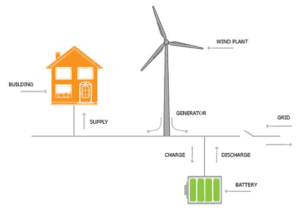 Africa is poised to embrace the next-generation of small-scale clean energy systems, says Webb Meko, Business Development Director, Sub-Saharan Africa, Black & Veatch.
Africa is poised to embrace the next-generation of small-scale clean energy systems, says Webb Meko, Business Development Director, Sub-Saharan Africa, Black & Veatch.
Reliability and emissions also improve when combining solutions such as solar photovoltaic (PV) and diesel-fueled generators, which are both backups for generation gaps.
Microgrid projects are scalable – single projects or program deployment – and provide a unique value proposition by bringing new capacity to the grid and powering critical facilities with increased assurance. Microgrids can also be planned and built within months with modular equipment – or 12 months for larger, more complex systems and programs. Programmatic approaches can be advantageous, as costs can be shared between stakeholders. Lower installation costs can also be achieved with strong project controls and effective program management. Completing detailed upfront feasibility studies define the project or programme parameters, along with related costs and schedule. This work is important ahead of implementation that includes engaging engineering design experts, equipment suppliers, and EPC providers, depending on the desired execution approach. “A fleet of microgrids conceived at the programme level can be executed through a front-end engineering and design pilot project effort, then rapidly replicated across multiple sites,” said Meko. “Additionally, approaching microgrids as a programme enables standardisation of equipment and controls, which helps to reduce the cost on a per-project basis,” he explains. Microgrids can play a critical role in bringing much-needed power to African citizens and offset current grid challenges. Additionally, they can help achieve energy efficiency and sustainability objectives by deploying distributed energy resources, such as renewables.






